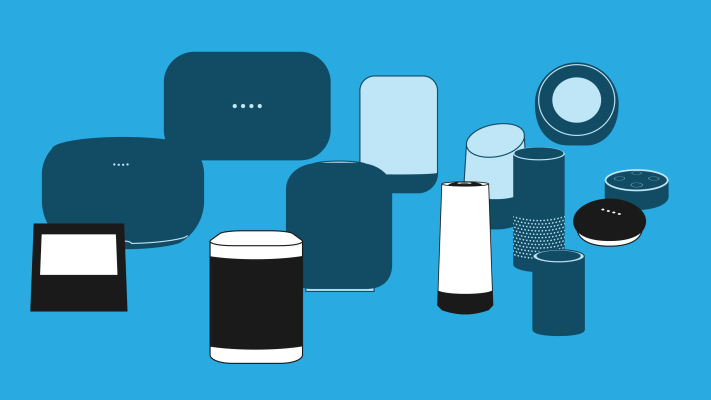A new annual survey taken before the current COVID-19 crisis led to restrictions of movement in much of the U.S. suggests good news for Amazon, Facebook’s dominance unthreatened and continued growth in podcasting.
Edison Research and Triton Digital released their annual Infinite Dial survey last week, compiling data on consumers’ use of smart speakers, podcasts, music streaming and social media from 1,500 people (aged 12 and older) to compare year-over-year changes. Here are a few interesting findings:
Voice assistants and smart speakers
Sixty-two percent said they use a voice-based virtual assistant, most commonly via a phone or a computer. There has been a lot written about interactive voice as the next major medium for human-computer interaction after mobile phones, so it’s noteworthy to see that use of the technology is still associated with personal computing devices rather than hands-free smart speakers placed in the surrounding environment.
Smart speaker ownership did increase to 27% of respondents, up from 24% in 2019, even though respondents owned an average 2.2 speakers. In fact, the cohort that owned three or more speakers increased from one-quarter to one-third of owners in just a year, with Amazon Alexa continuing to dominate market share.
Interactive voice experiences continue to center on command-and-response utility. The outstanding question in this market is why, when there is substantial market penetration of smart speakers, there hasn’t been mainstream content that’s native to interactive voice. Simple trivia games like “Jeopardy” remain the primary entertainment content, and, while startups like Volley and Doppio Games are pioneering new voice-native experiences, the format hasn’t had a pop-culture moment like “House of Cards” was for streaming TV and “Serial” was for podcasting.
Music streaming
Those who owned a smart speaker were twice as likely to say Amazon Music is their most-used audio brand than the overall population. As noted last year, Amazon Alexa seems to be working as a wedge to bring Amazon into more aspects of consumers’ lives, especially when 42% claimed to already be Amazon Prime members (some may just be using others’ accounts though).
Amazon Music and Spotify increased market penetration the last three years, whereas Apple Music held steady with last year’s numbers and Pandora continued a three-year decline (although it remained the most popular audio brand among people over 35).
Among respondents age 18+ who have been in a car recently, the proportion who tuned into terrestrial radio has held steady over the last three years at around 85%. While use of in-car streaming services is increasing, people aren’t abandoning radio entirely. This may be a positive note for investors in iHeartMedia, the largest radio broadcaster in the U.S., as its stock has dropped 60% since January 31.
Social media
The social media era of the last 15 years has clearly matured. There has been little change with regard to who uses different social media platforms. Consistent for the last three years, roughly 60% of respondents used Facebook, 40% used Instagram, 30% used Snapchat and Pinterest and 20% used LinkedIn, Twitter and WhatsApp. The new addition to this year’s survey is that 11% percent of respondents were also TikTok users.
The only major differences if you look exclusively at the age 12-34 demographic that drives social media platforms are Instagram and Snapchat moving up to the 60% tier, with Facebook and TikTok hitting 25% market penetration (plus LinkedIn shrinking to 20%, given teens not in the workforce). When asked which of these they use the most, the majority of respondents in this age group still said Facebook (32%) or Instagram (27%), suggesting that Gen Z and millennials are not flocking from these apps as much as industry discussion makes it seem.
Podcasts
A quarter of the population listens to a podcast once each week. As with the last two years, these listeners reported an average of roughly 6.5 hours per week of listening, with half tuning into more than three podcasts per week.
Much of podcasting’s growth is coming from the 12-34 age group, half (49%) of whom are now podcast listeners at least monthly. Podcast audience is now nearly equal in ethnic diversity with the overall U.S. population, only slightly under-indexing among African Americans (11% of listeners versus 13% of population) but primarily falling short among Hispanics (11% of listeners versus 18% of population).
Esports
Esports may not be gaining the market penetration that has been hyped, with no increase since last year in the percent of those who watch live-streamed games (15%). There was a 23% increase in respondents aged 12-34 who have live-streamed their gameplay, from 12% to 16%; that’s healthy growth, but still far from being a social norm among young people.
Given the unique context of this year’s COVID-19 crisis with hundreds of millions of people — adults and children — stuck at home, the growth could jump noticeably by the publication of The Infinite Dial 2021.
